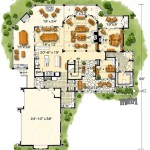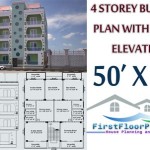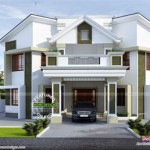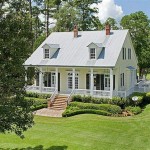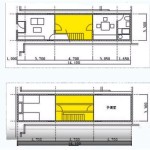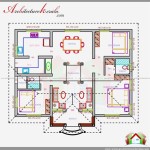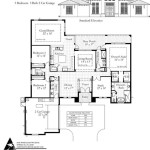Tudor Style House Plans With Turrets: A Detailed Exploration
Tudor style architecture, a revival of English building traditions from the Tudor period (1485-1603), remains a popular choice for homeowners seeking a blend of historical charm and modern living. Characterized by steeply pitched roofs, prominent gables, decorative half-timbering, and tall, narrow windows, the style evokes a sense of timeless elegance and craftsmanship. Adding a turret to a Tudor-style home elevates the design, creating a striking focal point and enhancing the overall sense of historical authenticity. These turrets, often cylindrical or polygonal in shape, can serve both aesthetic and functional purposes, providing unique interior spaces and commanding exterior views.
When incorporating turrets into Tudor style house plans, careful consideration must be given to the design's overall proportions, material selection, and structural integrity. The turret should seamlessly integrate with the existing architectural elements, complementing the existing rooflines, window placement, and ornamentation. This article provides a comprehensive overview of Tudor style house plans with turrets, examining their key characteristics, design considerations, functional aspects, and the factors that influence their cost and construction.
Key Characteristics of Tudor Style Architecture
Understanding the core elements of Tudor style architecture is crucial before exploring the integration of turrets. The defining characteristics of this style include steep roof pitches, often with multiple gables, which contribute to the visually striking roofline. Half-timbering, a decorative feature involving exposed timber framing filled with stucco or brick, is another hallmark of Tudor design. This detailing adds texture and visual interest to the façade.
Tall, narrow windows, often arranged in groups or oriel windows, are common; these windows contribute to the character of the home. Large, prominent chimneys, often made of brick or stone, are also typical. The exterior materials usually include a combination of brick, stone, and stucco, creating a rich and textured appearance. Entryways are frequently arched or have elaborate detailing like ornamental doors and sidelights. When considering a turret, its design and material should be in alignment with all these elements to maintain the architectural integrity.
Design Considerations for Turrets in Tudor Style Homes
The successful incorporation of a turret into a Tudor style house plan requires careful planning and consideration. The size and proportions of the turret should be in harmony with the overall scale of the house. An excessively large turret can overpower the design, while a too-small turret may appear insignificant. The turret's placement is also crucial; it should be strategically located to maximize its aesthetic impact and functional potential. Corner locations are often ideal for turrets, as they can define the building's edges and create a sense of visual balance.
Rooflines are also critical to consider when planning a turret. The turret's roof should seamlessly integrate with the main roof, creating a cohesive and visually appealing design. The turret roof is frequently conical or domed, and is an opportunity to incorporate unique detailing such as copper flashing or ornamental caps. The interior layout of the turret requires careful attention. The curved walls present unique spatial challenges, but they also offer opportunities for creative design. Often, turrets are used to house staircases, reading nooks, or small offices. The interior finishes should complement the Tudor style, using materials such as wood paneling, stone accents, and leaded glass windows.
The exterior cladding of the turret should match or complement the existing materials of the house. Brick, stone, stucco, and half-timbering are all appropriate choices. The turret windows should also be consistent with the style of the main house, typically being tall and narrow with multiple panes of glass. The overall design should respect the historical precedents of Tudor architecture while accommodating the functional needs of modern living. It’s important to consult with an architect who is experienced in Tudor style design to ensure that the turret is properly integrated into the house plan.
Functional Aspects and Interior Design of Turrets
Turrets in Tudor style homes are not just aesthetic features; they can also serve various functional purposes. A common use for turrets is to house a spiral staircase, providing a dramatic and space-efficient way to connect different levels of the house. The curved walls of the turret create a natural enclosure for the staircase, enhancing its visual appeal. A turret can also be used as a reading room or home office. The rounded space provides a sense of privacy and seclusion, making it an ideal location for focused work or relaxation.
The windows in the turret can offer panoramic views of the surrounding landscape, making it a desirable location for a quiet retreat. Master suites sometimes incorporate turrets as sitting areas or dressing rooms. The turret's unique shape and elevated position can add a sense of luxury and sophistication to the master suite. The interior design of the turret should complement the architectural style of the house. Wood paneling, stone accents, and leaded glass windows can all be used to create a Tudor-inspired interior.
Curved furniture and custom-built cabinetry can maximize the use of space in the turret. Lighting is also an important consideration. A combination of ambient, task, and accent lighting can create a warm and inviting atmosphere. Chandeliers, sconces, and recessed lighting can all be used to illuminate the space. The interior design should also take into account the functional needs of the space. If the turret is used as a reading room, comfortable seating and ample lighting are essential. If it is used as an office, adequate workspace and storage should be provided. Overall, the functional aspects and interior design of the turret should be carefully considered to create a space that is both beautiful and practical.
Materials, Construction, and Cost Considerations
The materials used in the construction of a Tudor style home with a turret play a significant role in its appearance and durability. Brick, stone, stucco, and timber are all common materials used in Tudor construction. Real stone and brick are the most authentic choices, but they can be more expensive than manufactured alternatives. Stucco is often used as a filler material between timber frames, providing a smooth and weather-resistant surface. The type of timber used for the framing and decorative elements can vary. Oak, cedar, and pine are all common choices, depending on the region and the desired aesthetic.
Considerations in the roof include traditional materials such as slate and cedar shake; these will enhance the historical accuracy of the design. However, asphalt shingles, which are more affordable and easier to maintain, are a common alternative. Constructing a turret requires specialized skills and expertise. The curved walls and rooflines present unique engineering challenges. It is essential to hire a contractor who is experienced in building turrets and who understands the principles of Tudor architecture. The foundation of the turret must be properly designed to support its weight and to resist settlement.
The framing of the turret typically involves a combination of wood and steel. The roof requires careful attention to detail to ensure that it is watertight and structurally sound. The cost of building a Tudor style home with a turret can vary widely depending on the size, complexity, and materials used. Building a turret will add to the overall cost of the project. The cost of the turret will depend on factors such as its size, shape, and the materials used in its construction.
Custom designs and unique architectural details will also increase the cost. Obtaining multiple bids from qualified contractors is essential for managing costs. A detailed budget should be developed before construction begins to ensure that the project stays on track.

22 Best Turret House Plans Ideas

European Tudor Home 4 Bed 2 5 Bath 2889 Sq Ft Plan 153 1750

Plan 17797lv Study In A Vaulted Turret European House Plans

42 House Designs With A Turret Heritage And New Houses

Castle With Turret 4 Bedroom House Plan

42 House Designs With A Turret Heritage And New Houses

Renovated Tudor Home With Courtyard And Stone Turret Daniel Contelmo

Turret Design Ideas Pictures Remodel And Decor Tudor Style Homes Architecture House

European Style House Plan 5 Beds Baths 8566 Sq Ft 453 608 Dreamhomesource Com

English Tudor Architecture

